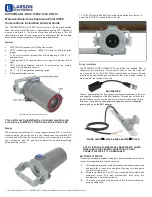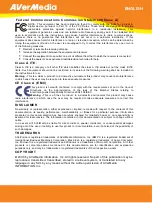
V1.02
Thom Hogan’s Complete Guide to the Nikon D300
Page 97
predictable. Cut your image review down from 10
seconds to 5 and you reduce the battery impact by half
(i.e. you’d get a 25% reduction in shots per charge).
Note: Most D300 users use the color LCD to review the
histogram, but there’s still a trick you can use to preserve a
bit of power. After you’ve reviewed the shot for exposure,
press the shutter release partway to activate the metering
and autofocus systems. The camera thinks you’re getting
ready to take another picture and turns the color LCD off
(normally, the image would stay on the color LCD until the
LCD time-out is reached or until you pressed the
button
to turn it off).
No other factors are as critical to shots per charge
performance as the two just mentioned. However, here are
some additional tips on power consumption with the D300:
• Use of autofocus lenses doesn’t significantly contribute to
power drain
. That’s because it’s a short draw of power.
The peak power draw may be high, but since it’s normally
such a short time during which this load occurs, it isn’t a
big deal. The difference in power consumption using AF
and AF-S lenses is negligible. But VR (vibration reduction)
lenses reduce battery life by another 10% or more when
the vibration reduction feature is activated (the vibration
reduction in the lens is powered by the camera). Since
many users tend to keep VR activated by holding the
shutter release partway, VR use can shorten battery life by
very observable amounts.
• Power consumption is highest when the camera is
“active”
(metering, focusing, taking a picture, transferring
images to the CompactFlash card, etc.). Reducing the
amount of time the camera is active (metering and focus
active) is another key to reducing power consumption.
Thus, you’ll get fewer pictures per charge if you leave the
camera active for longer periods. You can cut the active
timeout to 4 seconds via Custom Setting #C2 (see
“Meter/Camera Active Time” on page <545>).
















































